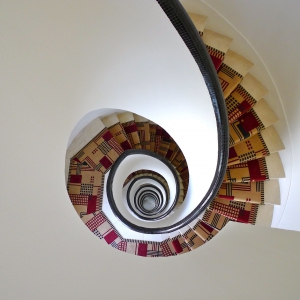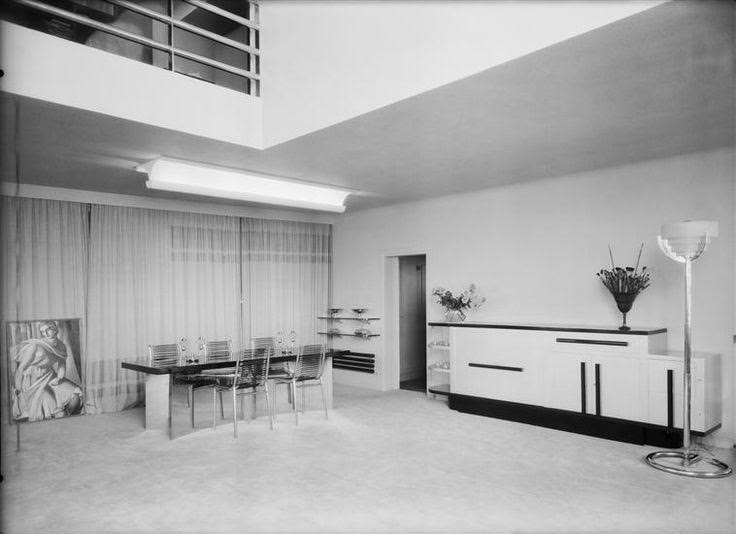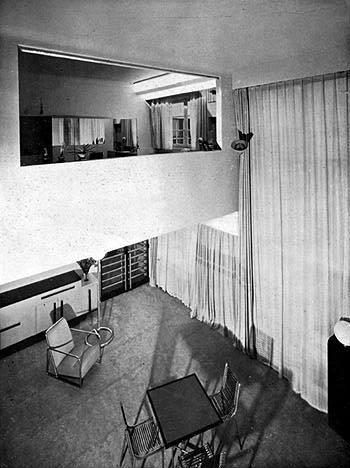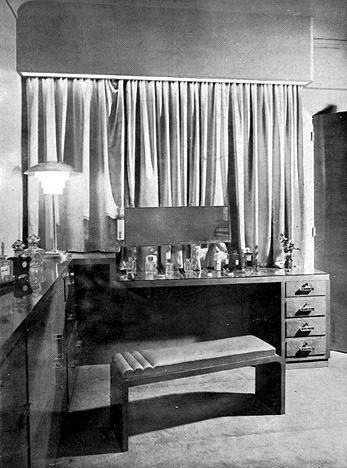
Robert Mallet-Stevens : 7 rue Méchain in Paris
No. 7 rue Méchain in Paris hides the unique building of architect Robert Mallet-Stevens enrolled in the french inventory of historical monuments. Designed between 1928 and 1929, this building is the only collective dwelling designed by Robert Mallet-Stevens.
This apartment building of 14 apartments was built at the request of the owner Jean Deschamps.
The building on the street, already existing, does not report the existence of a Mallet-Stevens building which was built in the backyard. It is through this building that we accessed to this unique Mallet-Stevens creation.
Here we find the architect’s repertoire : game of volumes, ratio of full and empty spaces, angles windows, large horizontal windows, rooftop terraces…
This parisian building designed and built by Robert Mallet-Stevens in 7 rue Méchain offered shelter at Tamara de Lempicka in a studio duplex apartment. She is active here at least until 1950.
Tamara de Lempicka Studio

It was at this address, 7 rue Méchain, that Tamara de Lempicka set up her studio.
The artist, of Polish origin, settled in Paris in 1918.
Emblem of Art Deco, she unleashes chronic with her bisexuality, her paintings and nudes sometimes very provocative and her image of the modern woman, independent and emancipated.
In this large studio designed by Robert Mallet-Stevens, Tamara de Lempicka created many of the works that made her famous, such as “The Sleeping Girl”, “Young Lady with Gloves”, “Adam and Eve”, “The Blue Scarf” and much more…
In 1928, Tamara de Lempicka acquires this vast space, created by Mallet-Stevens in 7 rue Méchain in Paris, which she entrusts the decoration to the architect. Then, he worked with the best of their field : stained glass windows by Louis Barrillet, metal ramps signed by Jean Prouvé and lighting by the Atelier Jean Perzel.
Our floor lamp No. 15 was in the living room, installed as a work of art. The prestigious lamp 162, also created in 1928 by Jean Perzel, was put on the famous portraitist dressing table.
A place full of history which is still a superb example of the art of living of the Roaring Twenties enlightened bourgeoisie.














